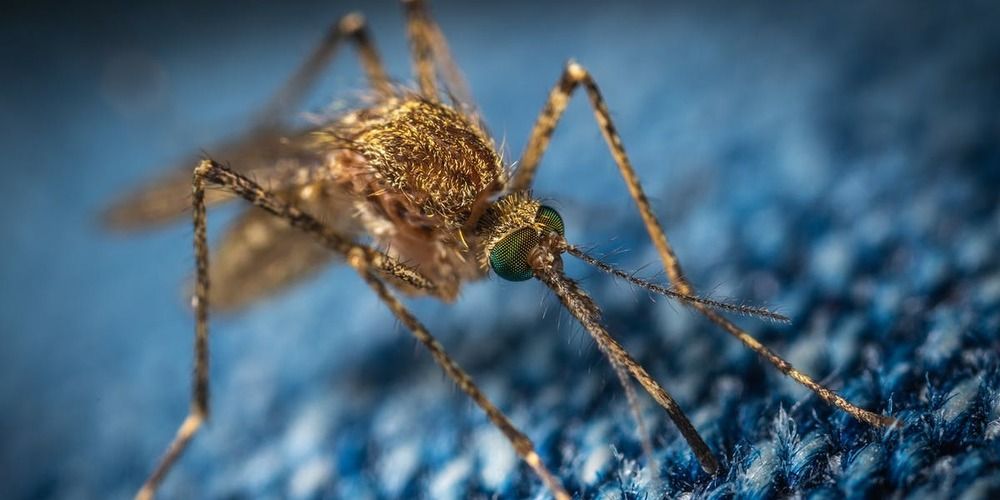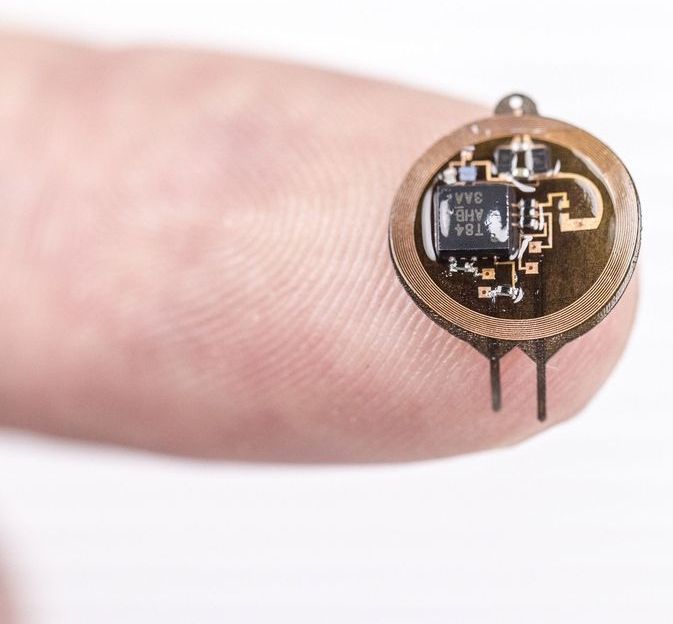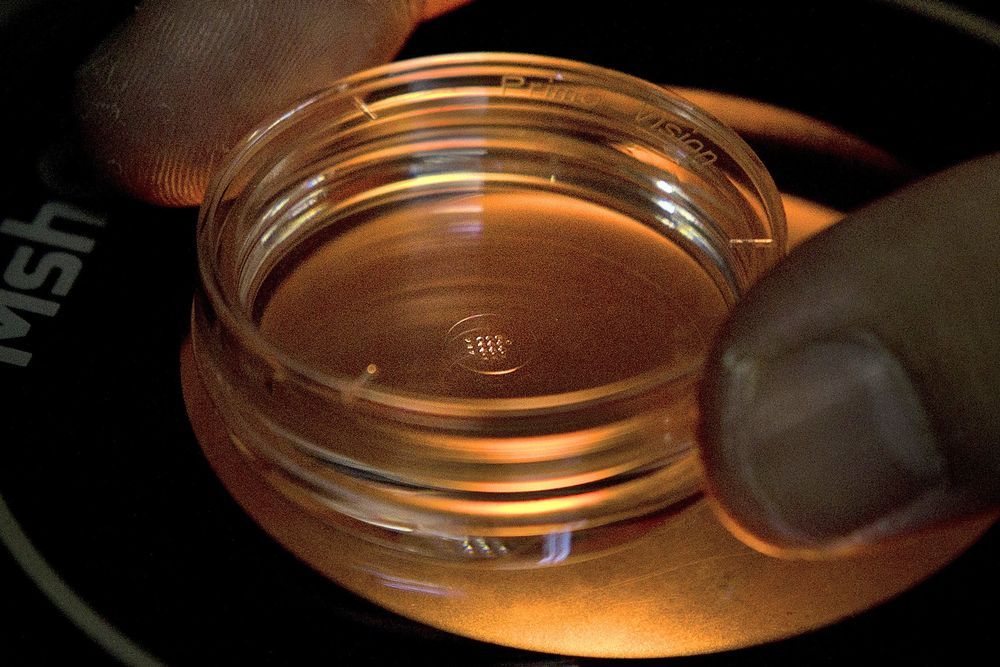Archive for the ‘genetics’ category: Page 390
Jan 7, 2019
Scientists could engineer a spicy tomato. Is it worth it?
Posted by Genevieve Klien in categories: bioengineering, biotech/medical, food, genetics
Spicy food is popular the world over, but the active ingredient that makes food taste “hot”—capsaicinoids, a group of chemical compounds has useful properties beyond making food taste delicious. However, the plants that make them (the chili pepper family, or Capsicum) are small and have relatively low yields. A new paper published today in the journal Trends in Plant Science proposes an alternative: engineering tomato plants to produce capsaicinoids. If all goes well, someday, you could enjoy a spicy tomato, or even be treated with capsaicinoids extracted from one.
The paper, written by a group at Brazil’s Federal University of Viçosa, builds on recent work that showed the tomato has all the genetic information it needs to produce capsaicinoids. “We know that all the genes are there, but in the tomato they are silent,” study author Agustin Zsӧgӧn says. His paper proposes a method for using gene-editing techniques to activate the genetic machinery in the tomato that tells it how to produce capsaicinoids, transforming the plant into both a “biofactory” that could produce larger amounts of the chemicals than it’s currently possible to grow and a spicy snack.
Tomatoes have capsaicinoid genetic pathways like peppers because the two South American plants are related. “In our lab, we work with both species,” Zsӧgӧn says. Last year, his team used gene editing to “domesticate” a wild tomato in just a few generations, engineering the strain to produce larger fruit, and greater quantities of it, than in the wild. This kind of process is how we ended up with the crops we eat today—early farmers planted the offspring of the most fruitful plants of each generation, enabling their genetic survival. CRISPR-Cas9 is just a shortcut.
Jan 7, 2019
Genetic testing is the future of healthcare, but many experts say companies like 23andMe are doing more harm than good
Posted by Genevieve Klien in categories: biotech/medical, genetics, health
- Genetic testing will be a cornerstone of healthcare in 2019, experts say.
- There are two ways to do the testing: getting a costly but complete genetic workup through a doctor or opting for a cheaper at-home test like those sold by 23andMe.
- Clinicians and advocates criticize the at-home approach, which they say prioritizes convenience over privacy and long-term health.
- But entrepreneurs counter that the at-home approach lets more people access information.
- Which method will win out, and at what cost?
As millions of Americans sat down to Thanksgiving dinner, the biomedical researcher James Hazel sent out a stark warning about the genetic-testing kits that he surmised would be a hot topic of conversation.
Most of them are neither safe nor private.
Jan 6, 2019
Scientists Fight Back Against Deadliest Animal on Earth Using “Gene Drives”
Posted by Genevieve Klien in categories: biotech/medical, genetics
What is the deadliest animal on earth? It’s a question that brings to mind fearsome lions, tigers, sharks, and crocodiles. But the answer is an animal that is no more than 1 centimeter long.
A few mosquito species, out of the thousands that populate different environments, are the deadliest animals on earth. Anopheles mosquitoes alone, transmit malaria through their bite and annually infect more than 200 million people, and are responsible for 400,000 deaths per year, of which 70 percent are children under the age of 5.
Other mosquito species also transmit diseases — dengue, West Nile, and Zika — through their bite.
Continue reading “Scientists Fight Back Against Deadliest Animal on Earth Using ‘Gene Drives’” »
Jan 4, 2019
Becoming the First Transhuman: A Call For The Right Stuff
Posted by Mary Jain in categories: biotech/medical, cyborgs, genetics, life extension, neuroscience, space, transhumanism
Many scientists research the practical and immediate applications of bio molecular technology but it seems most fail to study our most important, and largest organ, our skin.
Who will officially be the first transhuman? Will it be you? Why wait decades? This article explains one approach to speeding up the process and also the challenge involved.
Defining the Object of the Goal:
Continue reading “Becoming the First Transhuman: A Call For The Right Stuff” »
Jan 3, 2019
DNA-testing company 23andMe has signed a $300 million deal with a drug giant. Here’s how to delete your data if that freaks you out
Posted by Nicholi Avery in categories: biotech/medical, genetics
Popular spit-in-a-tube genetics-testing companies like Ancestry and 23andMe can — and frequently do — sell your data to drugmakers. But on Wednesday, one of those partnerships became much more explicit, when the pharmaceutical giant GlaxoSmithKline announced it was acquiring a $300 million stake in 23andMe.
As part of a four-year deal between the two companies, GlaxoSmithKline will comb 23andMe’s genetic data to look for new drugs to develop, also referred to as drug targets. It will also use the genetic data to inform how patients are selected for clinical trials.
If that news has you thinking about how your own genetic material is being used for research, know that though the DNA you submit to these services is ostensibly anonymized, leaks can happen, and privacy advocates say that such incidents could allow your data to find its way elsewhere, perhaps without your knowledge.
Jan 2, 2019
Controlling neurons with light—but without wires or batteries
Posted by Saúl Morales Rodriguéz in categories: biotech/medical, genetics, neuroscience
University of Arizona biomedical engineering professor Philipp Gutruf is first author on the paper Fully implantable, optoelectronic systems for battery-free, multimodal operation in neuroscience research, published in Nature Electronics.
Optogenetics is a biological technique that uses light to turn specific neuron groups in the brain on or off. For example, researchers might use optogenetic stimulation to restore movement in case of paralysis or, in the future, to turn off the areas of the brain or spine that cause pain, eliminating the need for—and the increasing dependence on—opioids and other painkillers.
“We’re making these tools to understand how different parts of the brain work,” Gutruf said. “The advantage with optogenetics is that you have cell specificity: You can target specific groups of neurons and investigate their function and relation in the context of the whole brain.”
Continue reading “Controlling neurons with light—but without wires or batteries” »
Jan 2, 2019
Is it ethical to engineer HIV-proof babies?
Posted by Genevieve Klien in categories: biotech/medical, genetics
A Chinese scientist has claimed to use CRISPR to genetically engineer two babies. An expert explains what this means and the ethical implications.
Jan 1, 2019
Rejuvenation: The discovery of animal cloning and subsequent development of cell reprogramming technology were quantum leaps as they led to the achievement of rejuvenation by cell reprogramming and the emerging view that aging is a reversible epigenetic process
Posted by Montie Adkins in categories: biotech/medical, genetics, life extension
Here, we will first summarize the experimental achievements over the last 7 years in cell and animal rejuvenation. Then, a comparison will be made between the principles of the cumulative DNA damage theory of aging and the basic facts underlying the epigenetic model of aging, including Horvath’s epigenetic clock. The third part will apply both models to two natural processes, namely, the setting of the aging clock in the mammalian zygote and the changes in the aging clock along successive generations in mammals. The first study demonstrating that skin fibroblasts from healthy centenarians can be rejuvenated by cell reprogramming was published in 2011 and will be discussed in some detail. Other cell rejuvenation studies in old humans and rodents published afterwards will be very briefly mentioned. The only in vivo study reporting that a number of organs of old progeric mice can be rejuvenated by cyclic partial reprogramming will also be described in some detail. The cumulative DNA damage theory of aging postulates that as an animal ages, toxic reactive oxygen species generated as byproducts of the mitochondria during respiration induce a random and progressive damage in genes thus leading cells to a progressive functional decline. The epigenetic model of aging postulates that there are epigenetic marks of aging that increase with age, leading to a progressive derepression of DNA which in turn causes deregulated expression of genes that disrupt cell function. The cumulative DNA damage model of aging fails to explain the resetting of the aging clock at the time of conception as well as the continued vitality of species as millenia go by. In contrast, the epigenetic model of aging straightforwardly explains both biologic phenomena. A plausible initial application of rejuvenation in vivo would be preventing adult individuals from aging thus eliminating a major risk factor for end of life pathologies. Further, it may allow the gradual achievement of whole body rejuvenation.
Dec 28, 2018
AP-NORC Poll: Most support gene editing to protect babies
Posted by Genevieve Klien in categories: bioengineering, biotech/medical, genetics
WASHINGTON (AP) — Most Americans say it would be OK to use gene-editing technology to create babies protected against a variety of diseases — but a new poll shows they’d draw the line at changing DNA so children are born smarter, faster or taller.
A month after startling claims of the births of the world’s first gene-edited babies in China, the poll by The Associated Press-NORC Center for Public Affairs Research finds people are torn between the medical promise of a technology powerful enough to alter human heredity and concerns over whether it will be used ethically.
Jaron Keener, a 31-year-old exhibit designer at Pittsburgh’s Carnegie Museum of Natural History, said he’s opposed to “rich people being able to create designer babies.”


















